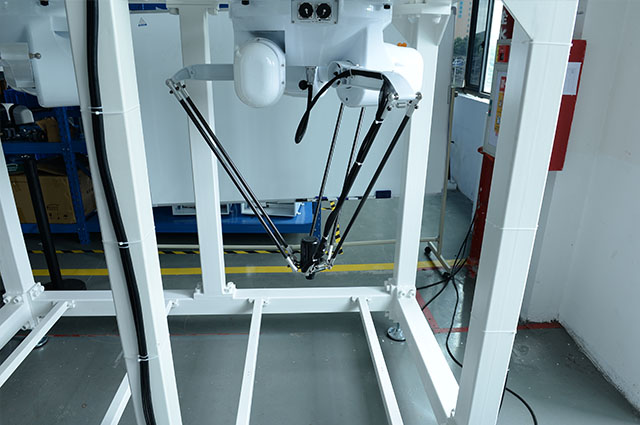As an important equipment in modern industrial production, box-packed product palletizing robots play an irreplaceable role in improving production efficiency with their efficient and precise working methods. Its emergence not only changed the traditional palletizing operation model, but also brought significant economic benefits and competitiveness improvements to the company.

The efficiency of box-packed product palletizing robots is mainly reflected in their fast operation speed and precise operation. The traditional manual palletization method often requires a lot of manpower investment, and is inefficient in work, which is prone to errors and fatigue. Box-packed product palletizing robots can complete a large number of palletizing tasks in a short period of time, and their speed is usually several times or even dozens of times that of manual labor. The robot has extremely high operating accuracy and can accurately place the boxed products in designated locations, avoiding the problems of product damage and untidy palletization caused by human factors. This allows enterprises to make more efficient use of space during the production process, improve the storage density of warehouses, and further improve production efficiency.
During the palletization process, box-mounted product palletization robots also have high flexibility and adaptability. Box-packed products of different specifications and shapes can be automatically palletized by programming and adjusting the robot's action parameters. Whether it is a large carton or a small package, the robot can quickly adapt and complete the palletization task without tedious manual adjustments. This flexibility allows enterprises to adjust the working mode of the robot at any time according to changes in production demand, improve the versatility and adaptability of the production line, and provide great convenience for enterprises' production scheduling and product switching.
Box-packed product palletizing robots can also seamlessly connect with other production equipment to form an efficient automated production assembly line. For example, a robot can work in collaboration with conveying lines, packaging machines and other equipment to realize the automatic conveying, packaging and palletizing of products. During the entire production process, the robot can automatically adjust the operating speed according to the production rhythm and demand to ensure the continuous operation of the production line and avoid wasting production time caused by equipment shutdown or waiting. This automated production method not only improves production efficiency, but also reduces labor costs and labor intensity, and improves product quality stability.
In order to give full play to the efficient advantages of box-packed product palletizing robots, enterprises need to pay attention to the maintenance and management of robots during use. Regularly maintain and inspect the robot to ensure its normal operation and working accuracy. Professional training for robot operators and programmers is also needed to improve their technical level and operation proficiency to better play the performance of the robot. Enterprises can also implement remote monitoring and management of robots by introducing advanced robot control systems and monitoring software, promptly discover and solve problems arising from robot operation, and improve production efficiency and equipment reliability.
Box-packing product palletizing robots have become an important means to improve production efficiency in modern industrial production due to their efficient, accurate and flexible characteristics. By rationally applying box-packed product palletizing robots, enterprises can achieve automated production, improve production efficiency, reduce costs, and improve product quality and competitiveness. In the future industrial development, box-packing product palletizing robots will continue to play an important role, bringing more opportunities and challenges to the development of enterprises.